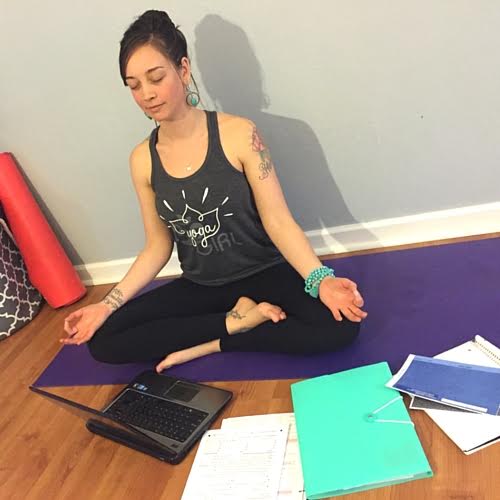
Bring more sthira sukham (steadiness & ease) into your tax season.
Unless you get your kicks from crunching numbers, talking about taxes is never any fun, right? But, just because it’s boring or confusing, doesn’t mean you should stick your head in the sand.
As independent contractors, we have to know the basics. Whether you file yourself or hire a professional, it’s important to be prepared for tax season and know what to track throughout the year.
A few years ago, I got into the yoga business out of love for the practice—but I had no idea what I was doing when it came to bookkeeping. As the founder and sole operator of a donation-based studio, it was up to me to figure it all out, using as little monetary resources as possible.
I spent endless nights scouring the internet for guidance and way too many hours trying to navigate QuickBooks, so I eventually gave up and pushed my accounting aside. Of course, when tax season snuck up on me, I was completely unprepared and stressed.
I enrolled myself in a few accounting and tax preparation workshops with my local Small Business Association, which I highly recommend to you. I ditched QuickBooks and began using a simple Excel spreadsheet at the suggestion of an accountant. Overtime, I refined my spreadsheets to reflect my unique situations and those of the yoga industry.
Once I learned how to organize my accounting, preparing my business and personal income taxes became a whole lot easier. I even figured out how to file all on my own! (Okay, well with a little help from TurboTax.)
So if you’re like I was, and want to bring some much needed sthira sukham into your tax season, follow these guidelines and get prepared:
1. Understand you are business.
Not all yoga teachers are independent contractors, but all independent contractors are self-employed. That means, if you receive any non-employee income teaching yoga (i.e. work as an independent contractor or teach private classes), you are in business for yourself. This is important to understand when it comes to filing your annual tax return, not only because the forms are different, but because as a self-employed individual you also get to deduct business expenses. Once you begin to recognize yourself as a business, you’ll start treating yourself like one.
2. Know the forms.
As a person in business for yourself, you are responsible for filing three forms with your annual tax return:
Form 1040 (standard form to file personal federal tax return)
Schedule C (profit or loss from a business)
Schedule SE (self-employment tax)
When self-employed, the IRS sees the individual and the business as one entity, so your business forms (the Schedule C and Schedule SE) are filed with your personal federal tax return (Form 1040). Because taxes were not withheld by an employer throughout the year, the two business forms are used to calculate the amount you earned and the amount you owe.
3. Deduct your expenses.
Remember, you are a business. Therefore, you’re allowed to deduct expenses from the amount of income you pay taxes on. The IRS states: “To be deductible, a business expense must be both ordinary and necessary.” For yoga teachers, business expenses are things like training, travel, equipment, advertising and insurance. To ensure you’re taking advantage of these deductions, you’ll need to keep good records. This leads me to the last tip.
4. Keep quality records.
The most essential part of all of this is keeping high-quality records throughout the year. Don’t wait until April to get the previous year’s information together (like I did). Instead, create yourself an “Income and Expense” spreadsheet. Track all of your earnings as money flows in, and track all expenses as money flows out, in one convenient document. This will save you a ton of time when filling out your Schedule C, and remember to save all of your receipts and print the digital ones. Do not include your employee income. Keep this spreadsheet for your independent contractor information only.
Keep in mind, the U.S. tax system is very complex, and terms aren’t always black and white. Report everything, and err on the side of caution when taking deductions you are unsure about.
For more information about forms and deductions, check out The Yoga Teachers’ Guidebook to Income Taxes.
.
Author: Michelle Linane
Editor: Yoli Ramazzina
Photo: Author’s own.











Read 1 comment and reply